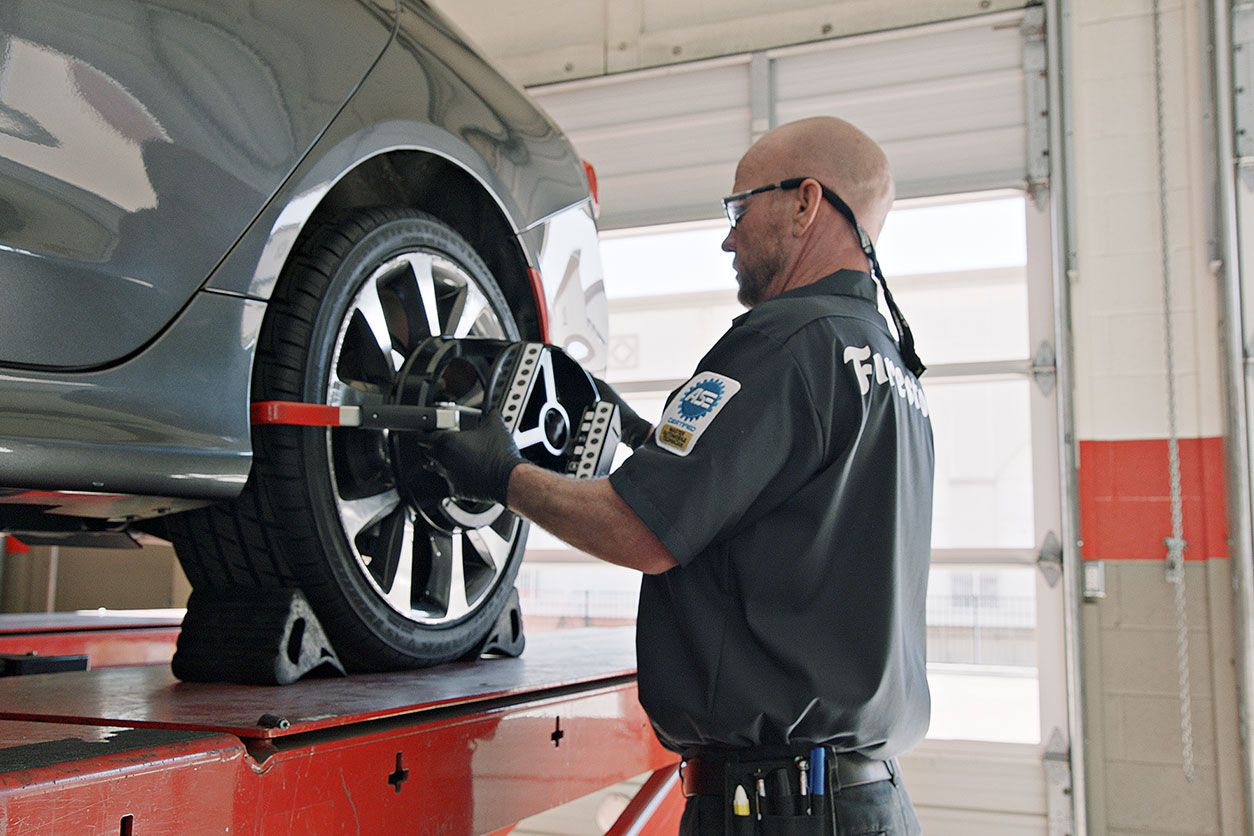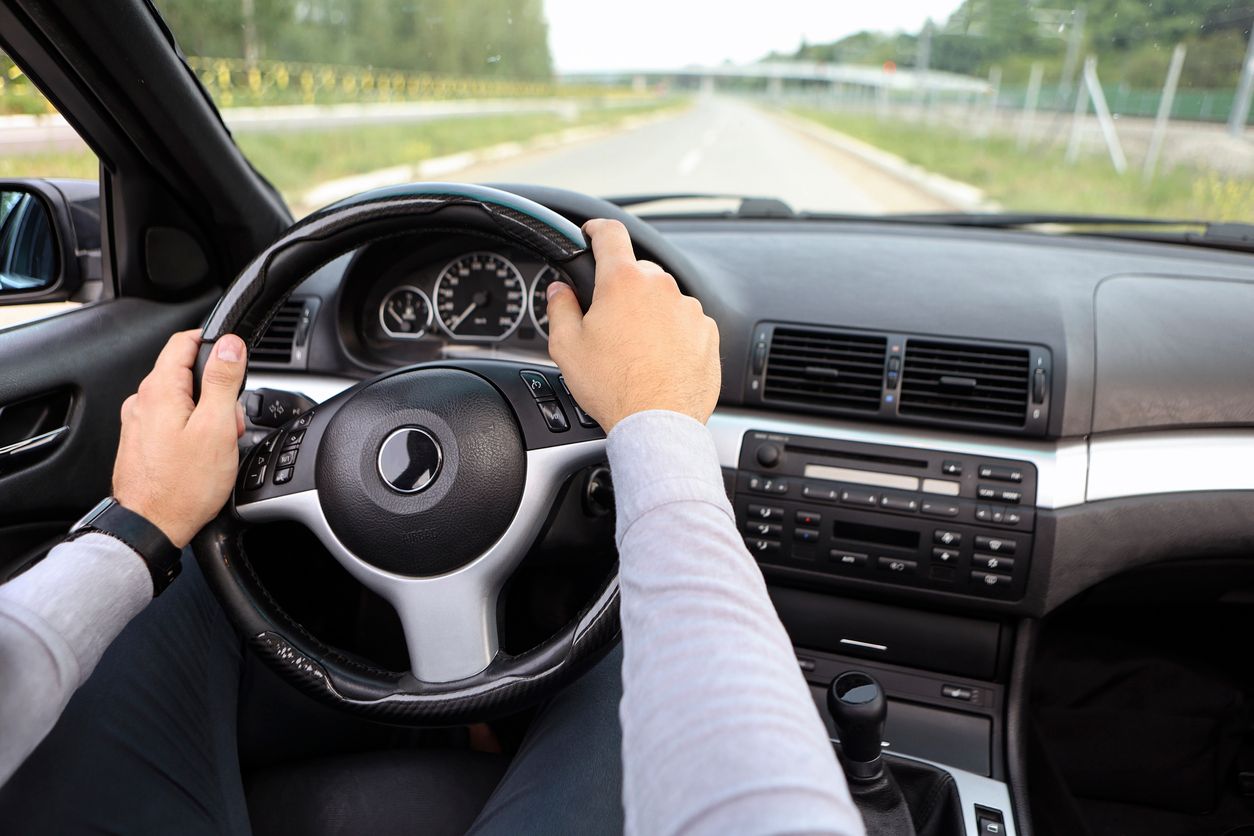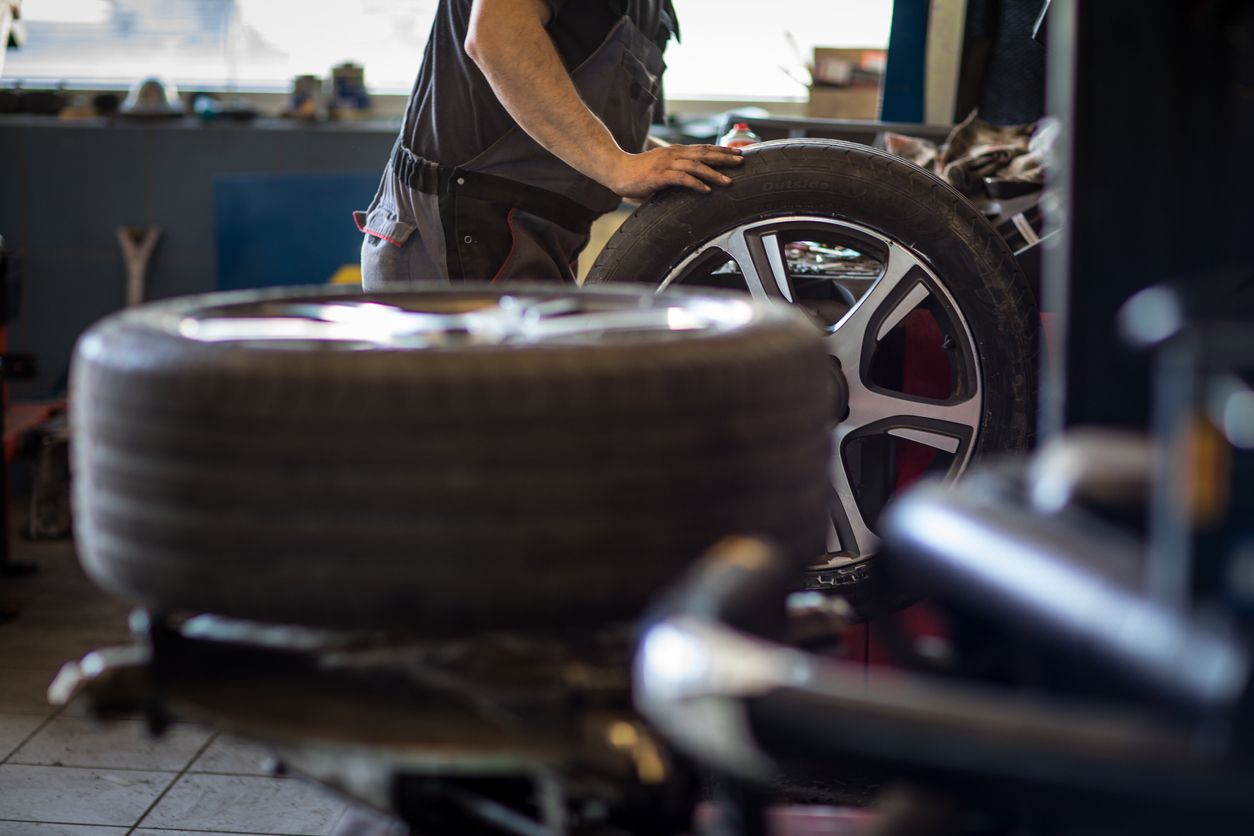The yoga studio isn't the only place where you'll hear the words balancing and alignment. You may also hear these words when you take your car in for service. But what do balancing and alignment mean off the yoga mat?
Having your tires balanced and wheels aligned is a critical part of regular car maintenance. Keep reading to learn more about these services, how to tell when you need them, where to get your regular vehicle maintenance, and more.
Tire Balance vs. Tire Alignment: Quick Look
| Service | Purpose | When to Get It | Benefits |
| Tire Balance | Corrects weight imbalances of your tires | • According to your manufacturer's suggested maintenance schedule • If your floor, seat, or steering wheel vibrates • After changes to your tires (e.g., new tire install, rotation, or flat repair) |
Smoother ride, helps promote even wear on your tires |
| Wheel Alignment | Adjusts tire angles for contact with the road | • According to your manufacturer's suggested maintenance schedule • If your car is pulling to one side • If you experience a crooked steering wheel • If you notice uneven tire wear • After installing new tires |
Smoother ride, helps tires wear evenly and maximize tire life |
What Is Tire Balancing?
Tire balancing (also known as wheel balancing) service corrects uneven weight distribution in the wheels by adding small metal weights. Tires are naturally imperfect and may not be exactly the same. Damage from potholes, curbs, or a rough road can further increase the differences. If you leave your car parked for extended periods without moving it, the tires might develop flat spots that cause imbalances.
The problem is that when your tires aren’t quite balanced, it can affect your driving experience and eventually impact other systems, like your suspension. That’s why having your tires balanced is essential.
How Does a Tire Balancing Work?
During a tire balance service, your tire and wheel assemblies are mounted onto a tire balancing machine. After a technician removes the old wheel weights, the machine spins the tire and wheel to measure the imbalance so that a technician can precisely install small metal weights to the wheel. Wheel balancing and alignment often happen during one service, but they shouldn't be confused for the same thing.
What Are the Signs That Your Tires Need Balancing?
Uneven tire wear and vibration in your steering wheel, floorboard, or seat can signal it's time for tire balancing. Imbalanced wheels can lead to vibration, excessive tire wear, damage to the suspension, and other problems. You may also want to have your tires balanced during a tire rotation, after a flat tire repair, or as part of your scheduled maintenance. New tires are always balanced before they are installed on the vehicle.
Interestingly, the part of your car that trembles can indicate whether the front or back wheels need balancing. If it's in the steering wheel, it’s likely your front tires. If the vibration is in the seats, the imbalance is likely in the back wheels.
What Is Wheel Alignment?
Wheel alignment (also known as tire alignment) is an adjustment of a car's steering and suspension. It's not an adjustment of the tires or wheels themselves. Alignment keeps your car from veering to the right or left. It can also improve your vehicle's handling and stop some unusual on-the-road vibrations.
What Are the Signs That Your Car Needs an Alignment?
Your vehicle might need an alignment if you notice any of the following:
- The car is pulling to one side of the road.
- The tire treads are wearing out prematurely or unevenly.
- The tires are squealing.
- The steering wheel tilts off-center when you're driving.
- Your alignment can be thrown out of whack after a car accident, driving over a pothole, or running into a curb.
How Do Tire Balancing and Wheel Alignments Benefit Your Car?
The most significant benefit of balancing services is that they help prevent premature tire tread wear. Technicians agree that getting your tires balanced every 5,000 to 6,000 miles (or as your manufacturer recommends) can help extend their lifespan and improve their performance.
Wheel alignment benefits, on the other hand, include improved vehicle handling, fuel efficiency, and tire life. Firestone Complete Auto Care recommends checking your vehicle's alignment every 6,000 miles or twice a year. Left untreated, alignment issues can shorten a tire's life by thousands of miles and damage critical steering and suspension components.
How Do Balancing and Alignments Extend the Life of Your Tires?
When your tires are balanced, the weight of the tires and pressure of your vehicle is distributed evenly around the entire tire and wheel. This means that some spots on your tires won’t wear more than the rest and you can help maximize the full life of your tires.
When your wheels aren’t properly aligned, your tires can tilt or point in the wrong direction which can lead to excessive wear and tear. Having your wheels aligned also helps ensure that your tires wear more evenly, extending their life.
Firestone Complete Auto Care Can Help Maintain Tires & Wheels
Are you noticing symptoms of balancing and alignment issues in your car? Don't let them disrupt your flow. Schedule an appointment at your nearest Firestone Complete Auto Care for a zen-like ride that’s both relaxing and reliable.



